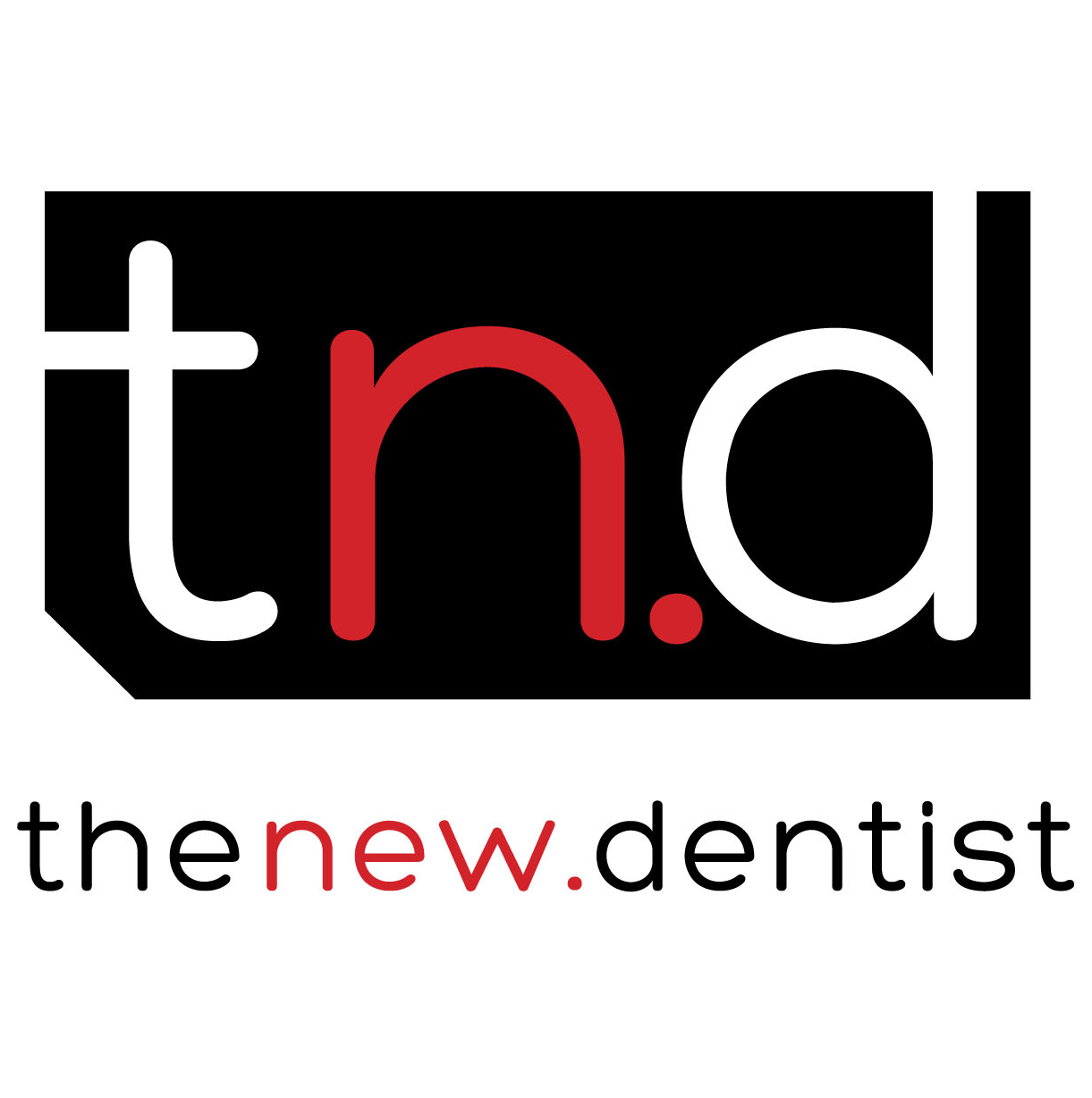Learning to See What Matters with Dr. Katya Archambault
- The New Dentist

- Jun 11
- 6 min read
Every radiograph tells a story, some of trauma, some of healing, and sometimes life-altering diagnoses. Dr. Katya Archambault doesn’t just interpret images, she teaches dentists how to see what they’re missing. In a field where early detection can change lives, Dr. Archambault is reshaping how radiology is taught by empowering dentists to walk into their practices knowing they won’t miss crucial signs.
Dr. Katya Archambault pauses thoughtfully when asked what led her to a career in oral and maxillofacial radiology. “Well, you know, it’s complicated,” she says, laughing softly. “It’s always a complicated story to tell when it’s about yourself. Sometimes you wonder—how did I end up doing this? But we are what we are because of what we’ve lived through.”
Dr. Archambault’s path to radiology was anything but linear. After dental school, with the encouragement of her father, “he said it was time to go work.” So, she began practicing general dentistry. Early in her career, she found herself treating pediatric patients. That inspired a deep interest in preventive orthodontics, which was her focus for a decade, until her patient base began to shift. As children grew up, their families became her patients too. That transition brought new clinical challenges.
With four young children and a 20-person practice, Dr. Archambault decided to enroll in NYU’s advanced implantology certificate program, traveling back and forth between Montreal and New York—186 overnight bus rides over two years. “I would leave Sunday night and return Thursday night, so I could work in my practice on Fridays and Saturdays. The plane would’ve cost me a whole day each way. The bus was the only way. I ate so much chocolate and drank so much coffee; my neck still hurts from sleeping upright!”
Despite the grueling schedule, she completed the program and went on to place over 12,000 implants in the following years. Her practice thrived. But a lingering dream, something she once considered out of reach, kept resurfacing: oral and maxillofacial radiology.
“It was a gift I wanted to give myself,” she says. “A full-circle moment. I loved the science, and I wanted to end my career doing something I felt truly passionate about.”
She applied to UCLA’s renowned program, which only accepts one candidate per year. “I was 45 years old,” she says. “I thought, ‘There’s no way they’ll accept an older candidate. They only take one!’ I told my staff, ‘Don’t worry. I’m just applying, I won’t get in.’”
But she did. And not only was she accepted, but she was also celebrated for her unique background in clinical dentistry and surgical care. “During the interview, they asked why I’d give up such a successful implant career. I told them, ‘This would be the culmination of everything I’ve done—bringing together science, surgery, experience and education.’”
Still, like many people stepping into new, competitive spaces, self-doubt crept in. “Inside, I was panicking. We talk about ‘imposter syndrome’ and it’s very real, especially for women, but I told myself, ‘They accepted me. They know what they’re doing. I’ll go and give it my all.’”
She did just that, graduating from UCLA and passing the boards, a notoriously difficult exam with only a 30% pass rate.
Now a board-certified oral and maxillofacial radiologist, Dr. Archambault brings all she has to the table. She combines the precision of a surgeon, the empathy of a mother, the discipline of science and the spirit of a lifelong learner. More recently, she’s turned her focus toward a patient population often overlooked in traditional dental care: individuals undergoing cancer treatment.
“I discovered there was very little being done for patients going through radiation,” she says. “That’s where I want to make a difference.”
Wellness Where It Matters Most
“In my world,” Dr. Archambault begins, “my patients are standing on a cliff. They’re about to go through radiation. They’re told they must extract teeth, often quickly, because those teeth put them at risk for infection, necrosis or other complications. And they’re told, ‘This is it. This is your window. You can do implants now or you may never be able to again.’”
For Dr. Archambault, this work goes beyond treatment. It’s advocacy. It’s humanity. And it’s why she quietly does over $750,000 in pro bono care each year. “So many of my patients lose their jobs. They can’t afford extractions or implants. I’m not doing this to rack up procedures. I’m doing this because in this world, my world, real things matter. And wellness is all I can offer.”
She pauses.
“And I’m a cancer patient now, too. Forty percent of people will be diagnosed with cancer in their lifetime. It makes you see life differently. And I can’t undo my or their diagnosis. But I can make sure their condition doesn’t jeopardize their wellness further. I can give them the best possible outcome—clinically, emotionally and humanely. That’s what I’m here for.”
When you sit down with Dr. Archambault, you expect to talk about CBCTs, technology or pathology. What you don’t expect is to be moved before you even reach the clinical stuff.
“You know, in addition to cancer, I had a surgery last year and I ended up with a flesh-eating bacteria in my wound. A stupid surgery, a 20-minute procedure, and I ended up in the ICU for two weeks, with a 5% chance of getting through it. I had to learn to walk, to talk. I had to learn to swallow. That was last May,” she says.
“It taught me a very good lesson; I don’t control anything. I’m so blessed to be able to just breathe. When people say, ‘Oh, relax, take a deep breath’—when I could not breathe because I had so much water in my lungs, I learned a new meaning of ‘taking a deep breath.’”
The Importance of Radiology & Teaching with Purpose
Radiology may seem boring to some. But for Dr. Archambault, it’s alive with stories.
“A radiograph is like a picture. Like opening your family photo album; there’s your childhood, your teenage years, your adult life. Radiographs are the same thing. They’re there to tell you a story.”
When she teaches, Dr. Archambault focuses on the story each radiograph tells. “If your eyes are trained, your brain will see it,” she explains. “I build every course, whether it's 30 minutes or three days, around stories: stories of cysts, benign lesions, malignancies, inflammatory and systemic conditions, trauma, and vascular or neurological problems.”
For Dr. Archambault, radiology is like a storybook with countless chapters. “These are all chapters in the amazing radiology storybook,” she says. “And my job is to give people the tools to read it. I want to empower them. Because I’m also a practitioner, I want them to feel confident recognizing what they see and knowing what to do next. Do I treat? Refer? Monitor?”
She also emphasizes the importance of addressing incidental findings: “What to do with them? Are they important? Every doctor can see what I see, it’s just a matter of training the eye.”
When she teaches radiology, Dr. Archambault does it with the same urgency and heart she brings to the clinic. “Half the patients I see with head and neck cancer—I can find the disease six months earlier on their radiographs,” she says. “That’s not a guess. I can see it.”
The problem? Many practitioners miss it, not because they don’t care, but because they were never taught what to look for. “Radiology can be boring. Let’s be honest. It’s often taught in a way that makes students zone out. So, when I teach, I make it impossible to ignore. I show them: Here’s the image. Do you see anything? Most say no. Then—boom—I show them a massive lesion, or a mandible half gone. It changes everything.”
She’s not interested in playing the blame game. She’s interested in making the dental community better—stronger, smarter and more compassionate.
“I don’t want anyone walking away thinking, ‘I should have caught that.’ I want them walking into their practice knowing they can catch it next time.”
Dr. Archambault’s journey, marked by resilience, generosity, and purpose, reminds us that behind every scan is a human life, and behind every diagnosis is a story waiting to be told with empathy and clarity.
Whether she’s guiding a fellow dentist through a radiographic mystery, advocating for patients in their most vulnerable moments, or using digital technology to expand access to care, she leads with heart. Her legacy is built not just on what she knows but also on how she shares it.
To learn from Dr. Archambault is to see radiology through a new lens: one shaped by science, sharpened by experience and softened by humanity.

Dr Katya Archambault is a Board Certified Oral and Maxillofacial Radiologist from UCLA and a Diplomate of the American Academy of Oral and Maxillofacial Radiologists . She also received a Certificate in Implant Dentistry from New York University. She got her dental degree from Laval University and did a Certificate in Microbiology at that same university. She also got extensive TMJ training in Austria at Danau University. She is the co-founder of the UCSD San Diego Dental Health Center in La Jolla, CA.
She also has an appointment in UCSD as a Clinical Instructor within the Department of Head and Neck Surgery and Otolaryngology and with the Department of Plastic Surgery. Her clinical interests are in Pathophysiology and Radiology, interpretation of the Maxillofacial Complex, Maxillofacial Radiology, Sleep Apnea and Airway evaluation, TMJ, Soft and Hard tissue reconstructive Surgery, Implantology and guided surgical navigation procedures. She is an international lecturer, published into journals and received several awards over the years. Dr Archambault is also a member of the American Academy of Oral and Maxillofacial Radiology, Academy of Osteointegration and International Congress of Oral Implantology.






Comments